Día de los Muertos: What Should My Brand Do?
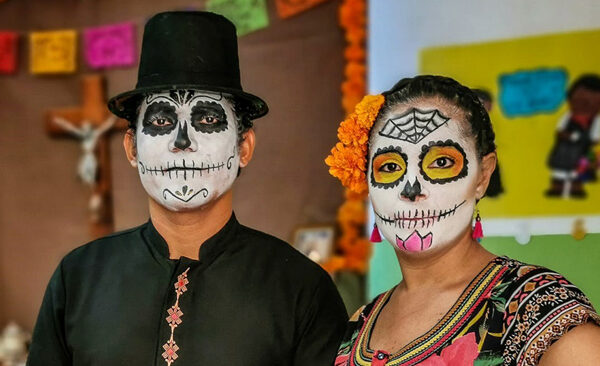
It’s not too late to activate! With over half of all Hispanic Americans (and two-thirds of Unacculturated) celebrating Día de los Muertos, brands will want to make their mark on this important holiday. Keep reading to learn what consumers expect from brands like yours this Day of the Dead.
Día de los Muertos, or Day of the Dead, is a traditional Latin-American holiday celebrating the lives of loved ones who have passed on. The holiday’s roots are predominantly Mexican, and celebrations take place on November 1st and 2nd. While Day of the Dead occurs around Halloween and may share some similar imagery such as skulls, these two holidays differ greatly and should not be conflated with one another.
Read on for key facts about the holiday, insights on how Hispanic American consumers celebrate, and ideas for how your brand can get involved.
What is Día de los Muertos?
Día de los Muertos is a two-day holiday honoring the deceased by celebrating the connection between life and death. What makes this occasion unique is its joyous—rather than mournful—tone. Celebrants gather together in remembrance of friends and family and have colorful parties and parades. They share happy or humorous memories. They make special meals and altars known as ofrendas (offerings) made up of their loved one’s favorite foods, items, pictures, and more. All of these traditions and symbolic gestures are meant to create a welcoming environment to attract the deceased’s spirits back to Earth on this annual occasion marked to keep their memory alive.
Traditions of Día de los Muertos
- Ofrendas are offerings made to the dead and are built in the home or at the cemetery. They traditionally consist of paper cutouts (papel picado), marigold petals, pan de muerto pastry bread, and personal items, such as photographs, favorite foods, or other sentimental objects.
- Skeletal imagery, such as the iconic La Catrina figure, show up in masks, puppets, colorful costumes, and face paintings.
- Sugar skulls are a staple ornament during celebrations, often not meant to be eaten. Edible fare includes Mole Negro (pepper and chocolate sauce), Sopa Azteca (tortilla soup), and any foods favored by the deceased.
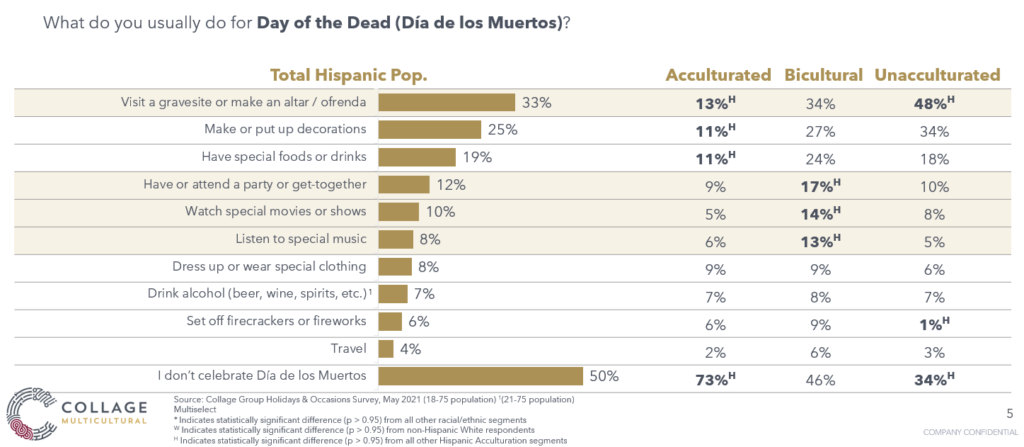
Key Consumer Insights
According to Collage Group’s 2021 Holidays & Occasions study, 52% of all Hispanic Americans, and 15% of the total American population, celebrate Day of the Dead. When we look by acculturation, we see it’s most widely celebrated by the Unacculturated (67%) and Bicultural (54%) segments, especially when compared to the Acculturated segment’s celebration rates which hover at 29%.
Día de los Muertos celebrations are both deeply personal and communal. So many brands may be wondering if they have permission to play.
From the celebrants’ perspective, brands generally have the green light. A plurality of Hispanic Americans (32%) say that all brands and companies should celebrate Day of the Dead in their marketing. Bicultural (33%) and Unacculturated (42%) Hispanic segments are especially comfortable with brands activating, whereas Acculturated are least likely to care.
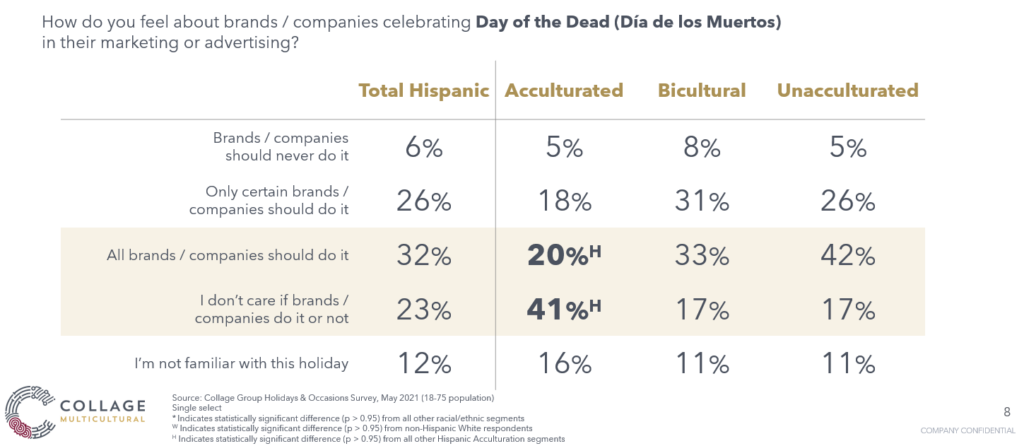
Americans of other races/ethnicities tend to be positive, indifferent, or unfamiliar with the holiday altogether. The good news is there’s little to no opposition across the board. This means that activating won’t cause backlash from other segments.
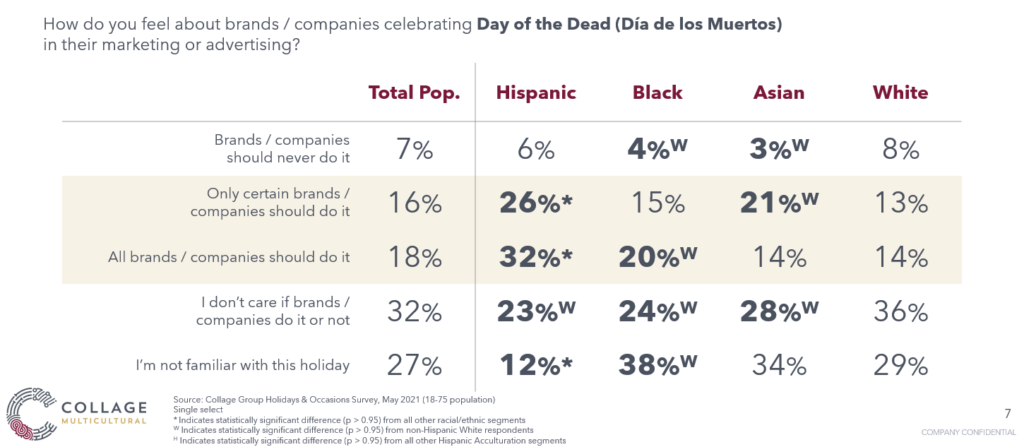
Brands that want to activate around Day of the Dead can do so in a way that’s well-received within the Hispanic segment (and simultaneously educational to other less familiar segments) by showcasing the holiday’s meaning and importance. This is the number one topic Hispanic Americans say brands should focus on. This type of messaging will be especially resonant with Bicultural and Unacculturated groups that are strongly rooted to their culture and proud to express their heritage.
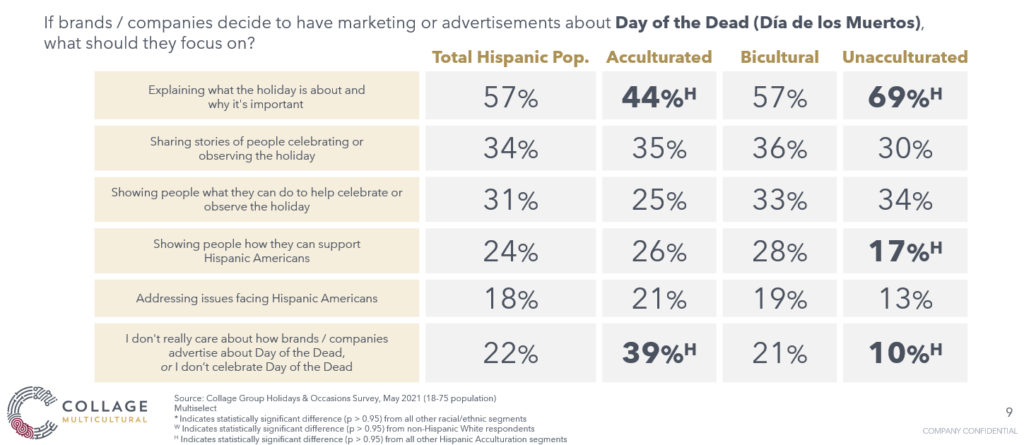
One brand that’s developed an excellent educational campaign on Día de los Muertos is McCormick in partnership with Poderistas. Part of the campaign includes a landing page with well-researched facts about the history and significance of the holiday.
To learn more about Día de los Muertos, we suggest the following sources:
Harness the power of cultural intelligence to win today’s consumers. Contact us to discover how you can turn insights into impact today!